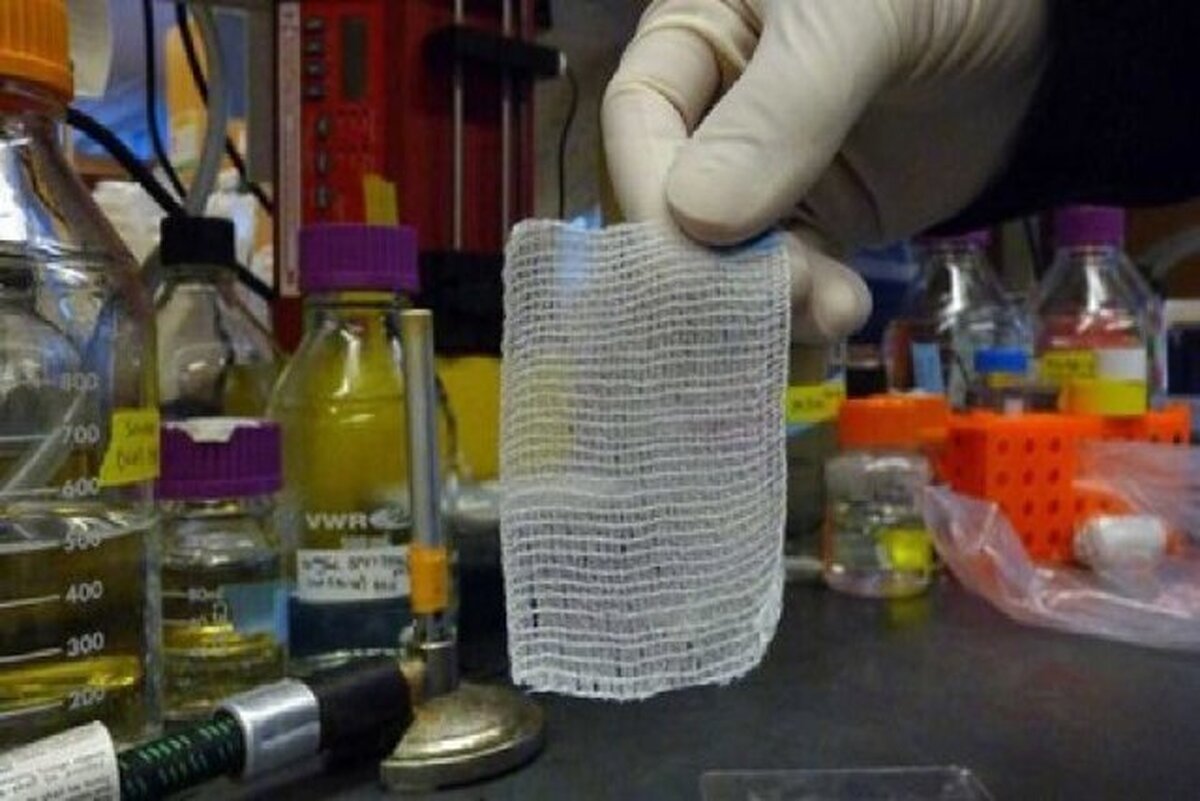Iranian Researchers Produce Antimicrobial Double-Layer Wound Dressing

Mazaher Qolipour Malekabadi, a professor of the Department of Medical Biotechnology at the IUMS Faculty of Paramedicine said that the double-layer dressing was a result of a research project entitled "Design, manufacture and characterization of a double-layer wound dressing made of acellular amniotic membrane covered with a very thin layer for skin tissue engineering".
“Dehydrated human amnion chorion membrane (dHACM) has been used for wound healing for years. However, this wound dressing has very low mechanical properties. it biodegrades quickly, and it also has very low suturing possibility, that’s why in this project, we tried to use a new method to place a very thin layer of less than 50 micrometers of a transparent silicone polymer on the amniotic membrane in order to reduce its negative points, meaning to laminate the wound dressing and increase its transparency,” he went on to say.
“Scaffolds in engineered tissues create a three-dimensional environment for the growth and differentiation of stem cells by imitating the natural tissue of the body. To date, various scaffolds have been made of synthetic and biological body materials, each of which come with pros and cons. Meanwhile, the simultaneous use of biological and synthetic materials together can cover the disadvantages of each scaffold and create a scaffold with new capabilities and wider applications that improve the process of tissue repair. Amniotic membrane has been used in tissue engineering for many years, but due to some disadvantages of this wound dressing, such as low mechanical properties or rapid biodegradability and difficulty in stitching, especially in wet conditions, we improved it by making it double layered with another silicone material that has high biocompatibility and special properties,” the researcher continued.
Saying that the obtained wound dressing is not only transparent, but also enjoys biocompatibility and high strength, and is also permeable to oxygen, the executive director of the research said, “This ultra-thin dressing is the first to be designed and manufactured in this field. The coating method used to make this double-layer scaffold is also innovative, which has made a coherent scaffold with low thickness, but with high strength, to be used in soft tissue engineering. The presence of silicone on the amniotic membrane also helps in preventing the formation of hypertrophic scars after wound treatment.”
Qolipour Malekabadi said that because of the presence of silicone on the amniotic membrane, which can pass oxygen through itself and also gives the dressing the capability to be sutured and an increase in its mechanical properties, the dressing is useful for the treatment of various skin wounds, especially in areas of the body that witness more activity and movement, for example knees or elbows, have a positive effect.
“Our team has been researching and developing medical products for more than 10 years. Our knowledge-based companies are active in this field and to date three of our products have received the approval of the General Department of Medical Equipment and Supplies for clinical use,” he concluded.
4155/i





















